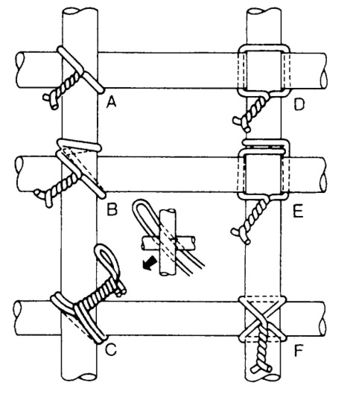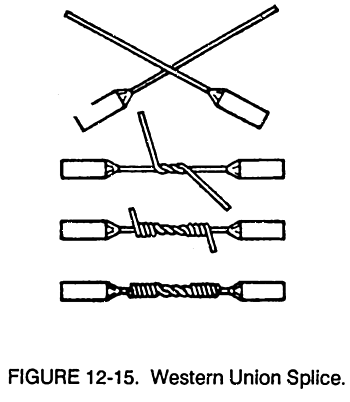Difference between revisions of "Ferrocement"
Thebastidge (talk | contribs) (→Methods of Tying) |
Thebastidge (talk | contribs) |
||
| Line 1: | Line 1: | ||
[https://en.m.wikipedia.org/wiki/Ferrocement Ferrocement on Wikipedia] | [https://en.m.wikipedia.org/wiki/Ferrocement Ferrocement on Wikipedia] | ||
| + | |||
| + | [http://www.ferrocement.net/ Ferrocement Educational Network] | ||
Ferrocement or ferro-cement (also called thin-shell concrete or ferro-concrete) is a system of reinforced mortar or plaster (lime or cement, sand and water) applied over layer of metal mesh, woven expanded-metal or metal-fibers and closely spaced thin steel rods such as [https://en.m.wikipedia.org/wiki/Rebar rebar]. The metal commonly used is iron or some type of steel. It is used to construct relatively thin, hard, strong surfaces and structures in many shapes such as hulls for boats, shell roofs, and water tanks. Ferrocement originated in the 1840s in France and is the origin of reinforced concrete. It has a wide range of other uses including sculpture and prefabricated building components. The term "ferrocement" has been applied by extension to other composite materials, including some containing no cement and no ferrous material. | Ferrocement or ferro-cement (also called thin-shell concrete or ferro-concrete) is a system of reinforced mortar or plaster (lime or cement, sand and water) applied over layer of metal mesh, woven expanded-metal or metal-fibers and closely spaced thin steel rods such as [https://en.m.wikipedia.org/wiki/Rebar rebar]. The metal commonly used is iron or some type of steel. It is used to construct relatively thin, hard, strong surfaces and structures in many shapes such as hulls for boats, shell roofs, and water tanks. Ferrocement originated in the 1840s in France and is the origin of reinforced concrete. It has a wide range of other uses including sculpture and prefabricated building components. The term "ferrocement" has been applied by extension to other composite materials, including some containing no cement and no ferrous material. | ||
Latest revision as of 15:35, 4 August 2017
Ferrocement Educational Network
Ferrocement or ferro-cement (also called thin-shell concrete or ferro-concrete) is a system of reinforced mortar or plaster (lime or cement, sand and water) applied over layer of metal mesh, woven expanded-metal or metal-fibers and closely spaced thin steel rods such as rebar. The metal commonly used is iron or some type of steel. It is used to construct relatively thin, hard, strong surfaces and structures in many shapes such as hulls for boats, shell roofs, and water tanks. Ferrocement originated in the 1840s in France and is the origin of reinforced concrete. It has a wide range of other uses including sculpture and prefabricated building components. The term "ferrocement" has been applied by extension to other composite materials, including some containing no cement and no ferrous material.
Advanced concrete mixes like Ductal or Geopolymer might make ferrocement work better.
One significant potential problem with Ferrocement in the marine environment is spalling due to corrosion, which is almost impossible to prevent in the long term, as concrete is porous and inevitably penetrated by seawater over time. This problem can be mitigated by making the cement thicker, using coatings, or using reinforcements that are more resistant to corrosion. However, all of these slow the progress, not eliminate it. Only by replacing the reinforcement with completely inert substances like Basalt or Glass fiber can this problem be eliminated.
Contents
Three methods of casting ferrocement:
Armature system:
In this method the skeleton steel is welded to the desired shape on either of sides of which are tied several layers of stretched meshes. This is strong enough, so that mortar can be filled in by pressing for one side and temporarily supporting from the other side. Filling in of mortar can also be administered by pressing in the mortar from both the sides. In this method the skeletal steel (bars) are at centre of the section and as such they add to the dead weight of without any contribution to strength.
Closed mould systems:
Several layers of meshes are tied together against the surface of the mould which holds them in position while mortar is being filled in. The mould may be removed after curing or may remain in position as a permanent part of a finished structure. If the mould is to be removed for reuse, releasing agent must be used.
Integrated mould system:
Using minimum reinforcement any integral mould is first to be considered to act as a framework. On this mould layers of meshes are fixed on either side and plastering is done onto them from both sides. As the name suggests, the mould remains permanently as an integral part of the finished structure. (e.g. double T-sections for flooring, roofing etc.) Precaution should be taken to have firm connection between the mould and the layers filled in later, so that finished product as a whole integral structural unit.
Methods of Tying
Six types used by the Seabees: (A) snap, or simple, tie, (B) wall tie, (C) double-strand tie, (D) saddle tie, (E) saddle tie with twist, and (F) cross, or figure-eight, tie.
SNAP, OR SIMPLE, TIE – The snap, or simple, tie (view A) is simply wrapped once around the two crossing bars in a diagonal manner with the two ends on top. The ends are then twisted together with a pair of side cutters until they are very tight against the bars. Finally, the loose ends are cut off. This tie is used mostly on floor slabs.
WALL TIE – The wall tie (view B) is made by taking one and one-half turns around the vertical bar, then one turn diagonally around the intersection. The two ends are twisted together until the connection is tight, then the excess is cut off. The wall tie is used on light vertical mats of steel.
DOUBLE-STRAND SINGLE TIE –The double-strand tie (view C) is a variation of the simple tie. It is favored in some localities and is especially used for heavy work.
SADDLE TIE – The wires of the saddle tie (view D) pass half way around one of the bars on either side of the crossing bar and are brought squarely or diagonally around the crossing bar. The ends are then twisted together and cut off.
SADDLE TIE WITH TWIST – The saddle tie with twist (view E) is a variation of the saddle tie. The tie wire is carried completely around one of the bars, then squarely across and halfway around the other, either side of the crossing bars, and finally brought together and twisted either squarely or diagonally across. The saddle tie with twist is used for heavy mats that are to be lifted by crane.
CROSS, OR FIGURE-EIGHT, TIE – The cross, or figure-eight, tie (view F) has the advantage of causing little or no twist in the bars.
Source: US Navy training course
Ferrocement Boat Construction
- US Navy Ferrocement Manual Vol. 1
- US Navy Ferrocement Manual Vol. 2
- US Navy Ferrocement Manual Vol. 3
- UN FAQ "Fishing Boat Construction: 3. Building a Ferrocement Fishing Boat"
- Design and Construction of Prestressed Concrete Vessels
- Prestressed concrete ocean structures and ships : a presentation of the expanding use of prestressed concrete for ocean structures and ships with guides to effective design and construction practice
- Concrete Ship (Wikipedia)
- ADA176233.pdf HANDBOOK FOR DESIGN OF UNDERSEA, PRESSURE-RESISTANT CONCRETE STRUCTURES
- Methods of Tying Ferrocement reinforcements
- Ferrocement Discussion
- Lofting Requirement and Technique for Ferrocement Hull
- Search results for ferro yacht on ConcreteConstruction.net
- Ferroboats.com
- Hartley Boats
- Patent US3951085A: Floating structure arrangement (Modular construction of floating reinforced concrete structures)
- Patent US3839521A: Process for making ferro-cement structures
- Patent US3932969A Ferrocement structures and method
Traditional Ferrocement construction may benefit from a rebar replacement material made from basslt fibers:
See Also:

